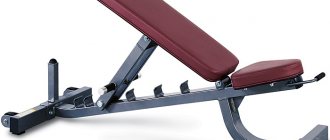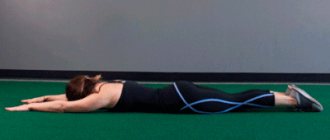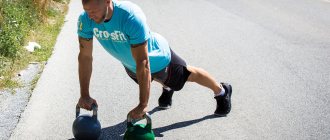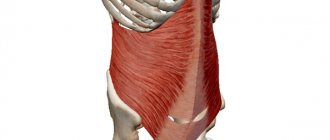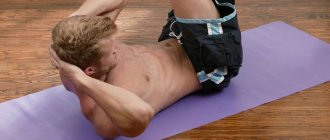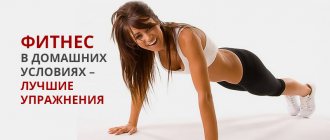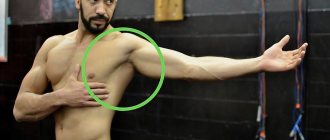Author: Timko Ilya - the ruler of the entire site and fitness trainer | more details >> Rod. 1984 Trained since 1999 Trained since 2007. Author and creator of the site tvoytrener.com. CCM in powerlifting. Champion of Russia and South Russia according to AWPC. Champion of the Krasnodar region according to IPF. 1st category in weightlifting. 2-time winner of the Krasnodar Territory championship in t/a. Author of more than 700 articles on fitness and amateur athletics. Author and co-author of 5 books.
Place in the author rating:
out of competition
(become an author) Date: 2014-11-12 Views: 40,744 Rating: 5.0
| All articles by the author >> | Medals articles >> |
Articles are loading...
To be honest, I personally am not a fan of neck training. Probably because it’s of little use in powerlifting and weightlifting. But, nevertheless, this part of the body is quite popular among men. After all, a strong neck can help you out in fights. And a person with a “bull” neck has a more menacing appearance.
Well, be that as it may, neck training requires not only a certain set of exercises, but also great caution. Since the cervical vertebrae are quite mobile. And, no matter what neck exercises you do, all movements should be smooth and without jerking. And according to tradition, we will begin the “debriefing” with anatomy.
Safety comes first
Before performing any physical exercise, it is necessary to warm up those muscle groups that will be subject to stress. General warming up of the body will also not be superfluous and will contribute to overall physical strengthening.
The neck is the part of the body where injuries are most dangerous and can even lead to hospitalization.
This is fraught with long, painful treatment and the need to undergo a rehabilitation course. The reasons may be different: pinched nerve, vertebral displacement, muscle strain. To avoid such troubles, be sure to do a thorough warm-up before physical activity. This requirement is relevant for everyone, beginners and experienced athletes.
Features of the training process
Neck training is a very responsible process. You can pump up the target muscle group with dumbbells, barbells, and other weights. It is best to perform heavy compound movements. There are no clearly defined individual muscle zones in the structure of the cervical spine; work in a comprehensive manner. Distribute the load evenly, working all the muscle fibers of the neck equally.
You can exercise in any conditions. Before performing basic exercises, the athlete must stretch his joints and ligaments. This way, it is possible to exercise without the risk of serious injury. You need to work at a slow pace, feel the load in the desired muscle department.
Warm-up
The neck is easy to stretch. This is done:
- Circular movements clockwise and counterclockwise. You need 2 sets of at least 20 repetitions each.
- Tilt your head to the sides and forward, backward. 1 approach in each direction, number of repetitions – 10 times.
- Move your head forward and backward. They should not be sharp, but with the achievement of maximum amplitude - tilt.
This technique will make the neck muscles elastic and stretch them, which significantly reduces the risk of injury.

Preparation for classes
Before you start doing neck exercises, you need to do a preparatory warm-up. It helps warm up the muscles and prevent sprains.
The most suitable exercises for warming up:
- Tilts in different directions.
- Turns left and right. You should try to touch your ear to your shoulder.
- Rotational movements to the left and to the right.
- To warm up the side muscles, you need to raise your arm up, bend it at the elbow and reach for the ear on the other side.
- For the neck muscles in front, make a lock with your fingers and move them to the back of the head. While holding your head, bend backwards.
- For the back muscles of the neck, you need to rest your palms on your forehead and try to bend forward.
All exercises are done at a slow and calm pace. You cannot make sudden movements and increase speed. If you do not follow simple rules, severe pain may occur.
Exercises are performed 5-7 times. When performing them, you need to feel the tension and tension of the muscles. Warm-up duration is 3-5 minutes.

A set of exercises performed lying down
Exercises for the neck, which will tone the muscles relatively quickly, are simple from a technical point of view. They fully answer the question: “How to pump up your neck at home?” To perform them, you do not need special sports equipment with weights; you only need a small mat or something similar. The work will take place in the first stages with your own weight.

Rifles
The simplest but most effective exercise is rolling. To complete them you need:
- Lie on the mat with your back so that your head is on it, raise your pelvis at an angle of approximately 30º and, without using your hands, begin longitudinal movements of your head.
- At the lowest point, the shoulder blades should touch the mat, at the top, it should be reached with the supra-forehead part of the head. Beginners can do a small amplitude.
Professionals touch the surface of the floor, carpet, or mat with the tip of their nose at the top point. This exercise develops the muscles in the back of the neck.
After this, you can roll over and take a lying position, rest your forehead on the mat and begin progressive rolling movements of your head forward and backward:
- You need to touch the surface of the mat with your nose and the crown of your head.
- The arms here serve as supports to maintain balance; they are in line with the shoulders, elbows are placed to the sides.
This exercise develops the muscles in the back of the neck and engages the outer part of the neck.
Common Mistakes
The most common mistakes when performing exercises include:
- During the exercise, sudden movements are made. All movements must be carried out at a slow and calm pace.
- Too much weight is being used.
- Exercises with straps and weights should not be performed by beginners, as there is a high probability of injury.

A set of exercises performed while standing
Neck exercises can also be done in a standing position.
- It is necessary to clasp your head with your palm to the level of your earlobe and pull with tension towards the hand that is clasping your head.
- After this, the head is moved in the opposite direction with tension in the neck.
- Then the head is returned to its original position by hand - tilted.
- After a certain number of repetitions, the hand changes and everything is repeated in the same order.
Here the main attention should be paid to the force applied by the hand to the head. It should be adequate to the degree of preparation of the neck muscles; there is no need to make the movement quickly or sharply. This is fraught with injury - pinched nerves.

It is much safer when the bases of the palms are placed under the chin, while the wrists should be in contact with each other. With their help, pressure is applied to the chin, the head is thrown back, and then with effort it returns to its original position.
This is another effective, practical and easy option for pumping up your neck at home. It is necessary to combine sets of exercises performed while standing and lying down to ensure uniform development of the cervical muscles.
Cervical spine: anatomy
The organ consists of 18 small muscles responsible for various movements of the oral cavity, circular rotations of the head, and the like. Here are the main muscles:
- Sternocleidomastoid. It is located on the side, and when a person looks forward, it becomes like the Latin letter V.
- The second muscle is attached to the hyoid bone and is located under the chin.
- Trapezoidal. This muscle is responsible for the function of rotating the head, and in addition helps to keep the upper part of the spine in a straight position, brings the shoulder blades together, raises the shoulders, etc.
In addition to these main ones, there are many auxiliary and additional muscle groups.
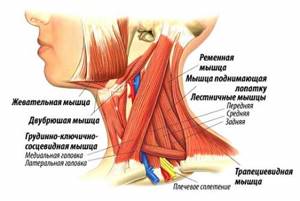
Frequency of training, number of approaches and repetitions
To strengthen and pump up your neck muscles, it is enough to train it 3 times a week. It is advisable to select training days so that there is a break of at least 24 hours between them. It is necessary to provide rest to the muscle fibers, otherwise the effect of training will be the opposite.
Overtrained muscles mean injuries and lack of visible progress.
Regarding the number of approaches and repetitions, there is a universal system of 3 approaches of 15–20 times. This scheme must be applied to each of the above exercises. For an even load and development of the neck, it is advisable to do the same number of repetitions in each direction, regarding training by clasping the head with your hand.
Neck exercises should not be done more than 20 times in one approach. It just doesn't make sense. A huge number of repetitions does not bring practical benefit, and the muscles will not develop.
If doing the exercises has become easy, you should complicate them. When you roll your head while lying on your back, you can pick up a small dumbbell or a plastic bottle with sand. So, by progressively increasing the load, you can achieve impressive results. But you should stick to the golden mean in everything and approach training wisely.

A huge, inflated neck creates the effect of a cobra hood, which looks ugly, but when moderately developed it looks great.
To work with weights, you can later buy a special helmet. But this is done after strengthening the neck. It is recommended to work with additional weight no earlier than 6 months after the start of training.
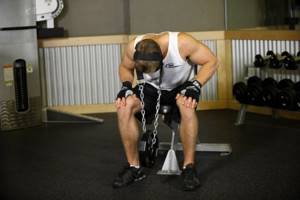
Who needs to pump up their neck muscles?
To reduce the risk of pain and injury, everyone can benefit from training these muscles. Most of us today have sedentary work at a computer, in which case pumping the neck muscles helps prevent cervical osteochondrosis. A strong neck reduces the pressure you can put on it and prevents soreness if you are in an awkward position for a long time.
In addition, during a stressful situation, the muscles of the trapezius and neck are under tension, and strong muscles reduce it. To reduce stress, stretch more.
Athletes of all sports (and especially martial arts) believe that pumped up neck muscles are extremely useful. Not only do they protect against collisions in contact sports, but they can also prevent concussions from impacts. In MMA, Brazilian Jiu-Jitsu and other combat sports, locks and neck holds are common, so developing a powerful neck is important not only for beauty, but also to prevent associated injuries. Wrestling bridges on the ground, when you need to hold not only your own weight on your neck, but also the weight of your opponent, are unthinkable without strong muscles.
In bodybuilding, a strong neck provides stability during heavy-weight compound exercises, such as squats and overhead pull-downs. And in everyday life, it is important for us to be able to look at our feet, up, to the side, and even just look back! And finally, you must agree that pumped-up neck muscles attract attention, because a strong neck is a sign of a tough guy!
Anatomical features of the neck muscles
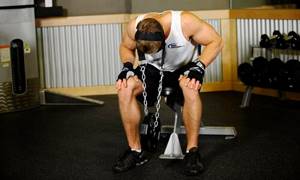
The basis of the neck is made up of seven interconnected vertebrae; our mobility is ensured by their special structure and the presence of muscles. All neck muscles are divided into three groups: superficial, middle and deep.
